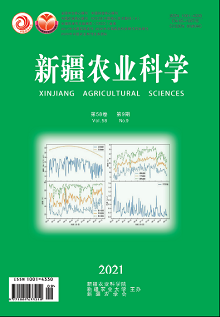|
|
Effect of Nitrogen Application Rate on Carbon Footprint of Cotton Field under "Kuanzaoyou" Mode in Xinjiang
RUAN Kang, WANG Xiangru, GUI Huiping, DONG Qiang, LI Leilei, WEI Xuewen, ZHANG Xiling, ZHANG Hengheng, SONG Meizhen
2021, 58(9):
1633-1641.
DOI: 10.6048/j.issn.1001-4330.2021.09.008
【Objective】 Optimizing nitrogen input in cotton field is an effective strategy to reduce greenhouse gas emissions and improve crop yields.【Method】 In this experiment, life cycle assessment (LCA) was used to study the effects of different nitrogen levels (0,120, 240, 360 kg/hm2) on the carbon footprint, carbon footprint composition and yield of cotton fields.【Results】 As the amount of nitrogen applied decreases, the carbon footprint per unit area of cotton also decreases. When the amount of nitrogen fertilizer (360 kg/hm2) decreases by 33.3% (240 kg/hm2) and 66.7% (120 kg/hm2), the carbon footprint dropped by 8.4% and 17.6% respectively. In terms of yield, with the increase of nitrogen application, cotton yield gradually increased. The seed cotton yield under N360 treatment was 8,035.4 kg/hm2, and that under N240 treatment was 7,797.2 kg/hm2, and there was no significant difference in the seed cotton yield between N240 and N360 treatment. In the production process of the "Kuanzaoyou" cotton planting model, the greenhouse gas emissions caused by irrigation electricity,agricultural filmand nitrogen fertilizer contribute the most to the carbon footprint, accounting for 47.4%, 25.2% and 24.3%. With the increase of nitrogen application, the total emissions of N2O in cotton fields will increase,N360 was 221.9%, 123.1% and 33.1% higher than CK, N120 and N240, respectively.【Conclusion】 Without affecting the yield, reducing the amount of nitrogen fertilizer can reduce the carbon footprint of cotton fields in northern Xinjiang, thereby achieving higher yields with a smaller carbon footprint in the arid regions of Northwest China.
|

